Amid Population Decline, Rural Texas Towns Look to Future
By Jill Ament, Veronica Apodaca, Cristela Jones, Paula Levihn-Coon and Gabriella Ybarra
Reporting Texas
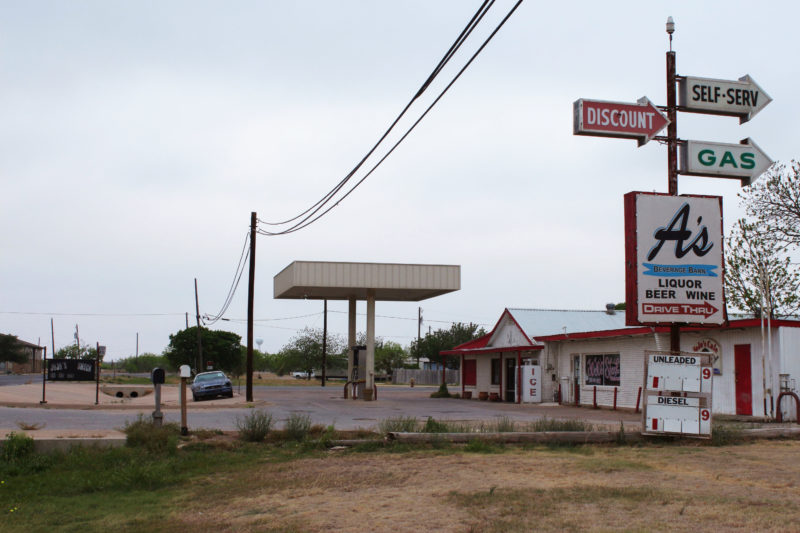
A vacated gas station hearkens to a different era outside of Eldorado, Texas, which like other rural areas in the state, has seen a population decline. Although the business at this location is closed, JoJo’s Shack restaurant, and a liquor store still operate next to it. Randall Reyes/Reporting Texas
Despite Texas gaining more people than any other state in the past decade, more than half of its counties lost population, according to the 2020 U.S. Census.
During the past few decades, changes in agriculture and the boom-or-bust oil and gas industry have led to dwindling employment opportunities in rural Texas. Many young people leave rural communities after high school in search of economic and social opportunity, often never returning.
“You start seeing what I describe as kind of a net out-migration of young people who age up through high school in their community where they grew up. And if they want to go to post-secondary education or they want to work in a job that’s, you know, potentially higher paying, they’re going to have to move to a more urbanized area,” Texas State Demographer Lloyd Potter said.
That loss of young people, Potter said, has left aging populations in rural communities.
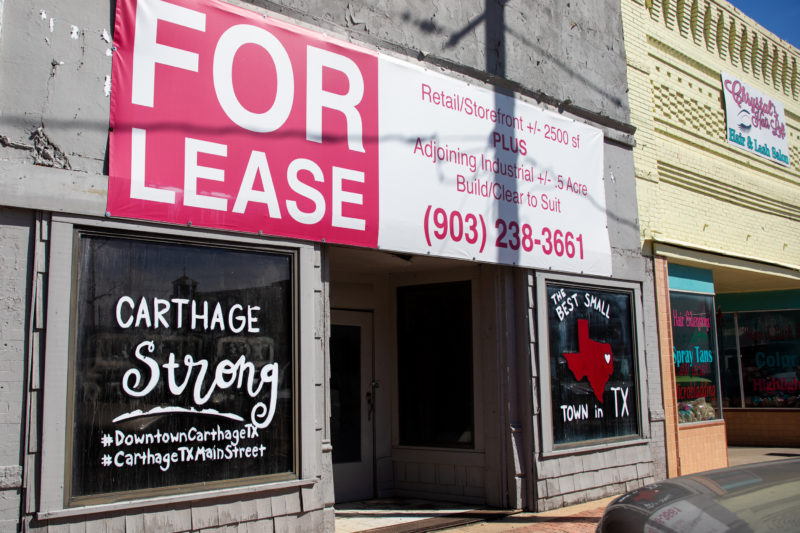
An empty storefront awaits new tenants in downtown Carthage, Texas, on March 1, 2022. Alyssa Olvera/Reporting Texas
Gregory Pogue is deputy executive director of the IC² Institute at the University of Texas at Austin. The IC² Institute and its students work with rural communities to address economic and infrastructure challenges. Aging in rural and mid-sized cities in Texas is happening at a much higher rate than urban areas, Pogue said.
“You couple this with reduction in birth rates and the real retirement trend, which is happening throughout many of the counties that have an aging population in rural areas. It raises the question: who are going to be the leaders in many of the communities in these rural or small city areas in the next 20 years?” Pogue said.
In March and April, Reporting Texas correspondents traveled to three Texas towns — Eldorado, San Diego and Carthage. Residents discussed how their communities are struggling to remain vibrant places to live amid economic and population decline. They also discussed the improvements — better internet access, better-paying jobs and improved infrastructure — that they think could bring a brighter future.
Eldorado
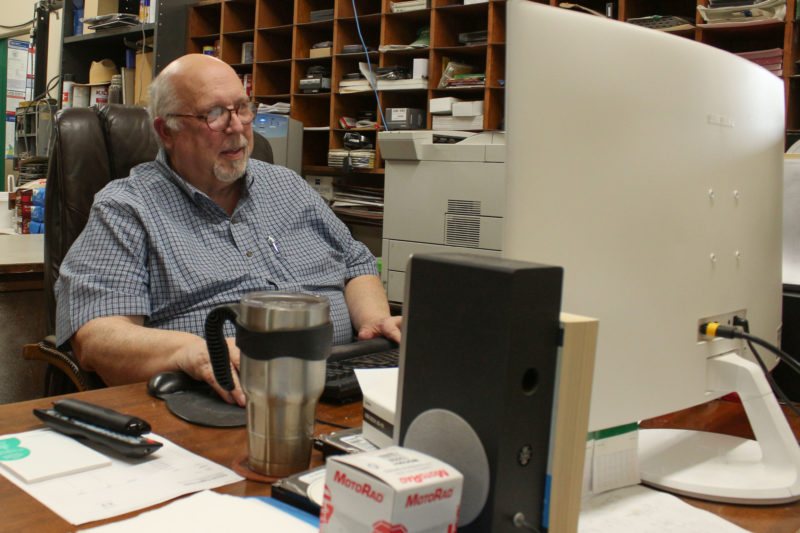
Randy Mankin, the publisher, and editor of the Eldorado Success works on the newspaper’s next issue on April 22, 2022, in Eldorado, Texas. Randall Reyes/Reporting Texas
Randy Mankin, 67, publisher of The Eldorado Success, sat in a worn leather chair in his downtown Elodorado office on a Friday in April.
“There’s a lot of closed up storefronts.” Mankin said. “We don’t have a clothing store. We don’t have a car dealership. We don’t, we don’t, we don’t, we don’t.”
From 2010 to 2022, Eldorado (pronounced ell-door-ay-duh) has seen its population drop from 1,978 to 1,432, according to the Texas Demographic Center.
The West Texas town has traditionally subsisted on goat, cattle and sheep ranching and the oil and gas industry. Extreme drought, high feed costs and fertilizer shortages have made ranching more difficult in the past decade. “You can go broke in a heartbeat,” rancher Houston Henderson said. “One mistake or one bad weather pattern and that’s it.”
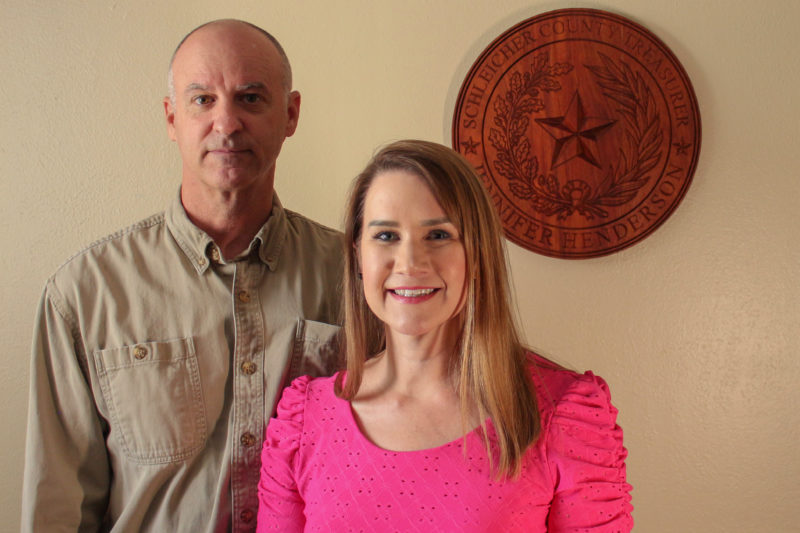
Although Jennifer Henderson, the Schleicher County treasurer, right, and her husband Houston, a rancher, acknowledge that young people are leaving Eldorado, Texas, they are optimistic that others will return. Randall Reyes/Reporting Texas
Young people often don’t want to ranch anymore, said Jennifer Henderson, Schleicher County’s treasurer and Houston Henderson’s wife. They head to cities such as San Antonio, and longtime ranching families are splitting their land into smaller plots and selling them off, she added.
Depressed natural gas prices have also cost the community jobs. Baker Hughes, a major oilfield services company, closed its Eldorado office in 2020. Its employees were lured west to the Permian Basin where jobs are more plentiful, Jennifer Henderson said. 
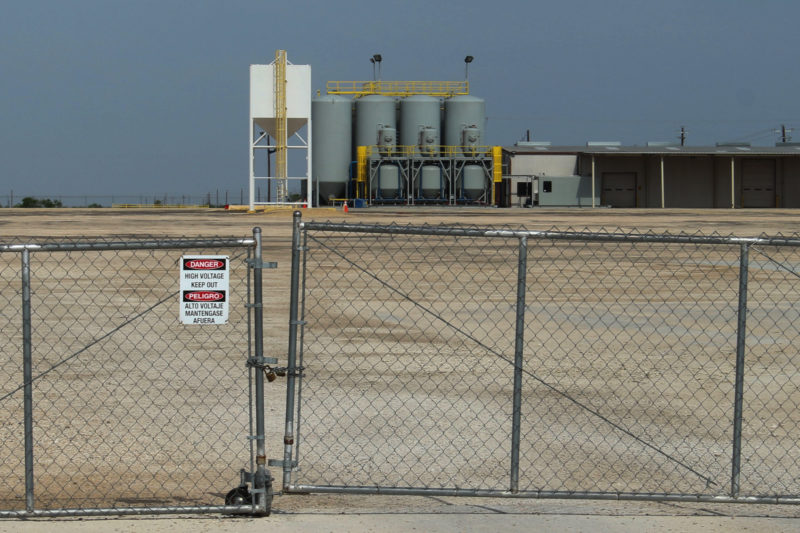
The Baker Hughes Oil and Gas Field Services sits empty in Eldorado, Texas, on April 22, 2022. The closing of this branch in 2020 has been cited by some Eldorado locals as a factor in the town’s population decrease. Randall Reyes/Reporting Texas
Some of that income has been replaced by the Live Oak wind farm that became operational in 2018. A second wind farm has been licensed but is not yet online.
Losing jobs isn’t the only challenge the community has faced.
Eldorado made national headlines in 2008 when the Texas Department of Public Safety removed 400 children from the Yearning for Zion Ranch, which operated a 1,700-acre ranch outside the town. The leader of the compound, Warren Jeffs, was convicted of bigamy and sexual assault in 2011.
“They had an active presence here well into after the 2010 Census. But they were pretty much all gone by the time the 2020 Census came along,” Mankin said.
The publicity over the ranch scared people away from Eldorado, Mankin said. “We saw an outflow of people from this community as the buildup of the YFZ ranch started. It appeared to all concerned that they were going to take over the county. People were afraid, so (they) moved to Kerrville or they moved to Fredericksburg or they moved to San Angelo.”
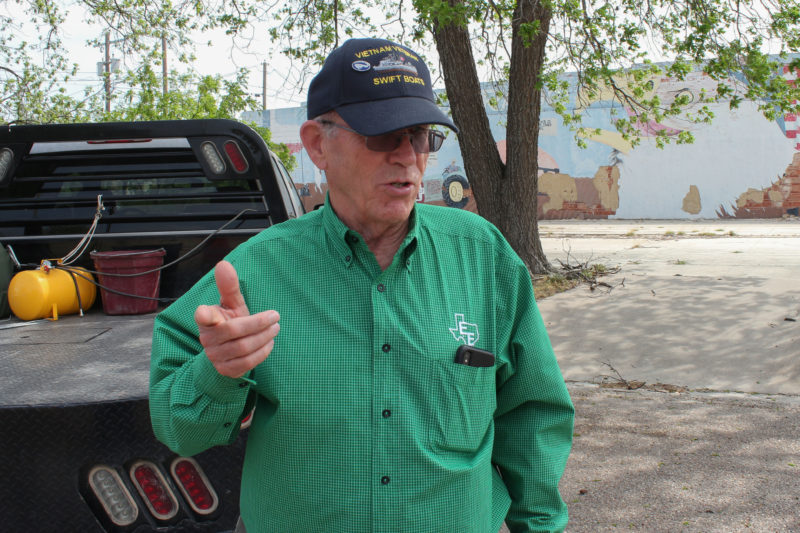
Finance Director of the Eldorado School District, Ray Ballew, talks about life in his hometown on April 22, 2022. The school district is one of the town’s biggest employers. Randall Reyes/Reporting Texas
The biggest employers in Eldorado are the Schleicher County school district and its medical center, which each employ about 100 people.
The school district maintains eight houses — average monthly rent is $450 — to lure teachers to Eldorado from nearby cities like San Angelo, which is 45 miles away, and where residents travel regularly for services not available in Eldorado. School enrollment was close to 800 in 1995. Now it’s about 500.
Eldorado’s medical center, with a clinic, nursing hospital and nursing home, opened in 2013, funded by a $17 million bond package. “I think it’s the prettiest, best run little hospital in West Texas,” said Mankin, who is on its board of directors. But the town has been unable to recruit a doctor willing to work in the hospital full-time, Mankin said.
Residents are unsure what the future holds, but some are optimistic
Mankin hopes that faster internet will bring people with Eldorado roots back to work remotely. Fiber-optic cable has arrived in town, as has Elon Musk’s Starlink internet access.
Jennifer Henderson citied a soon-to-be-built algae farm — which will turn algae into livestock feed — as a reason for optimism. “We’re all excited,” she said.
— Veronica Apodaca and Paula Levihn-Coon
San Diego
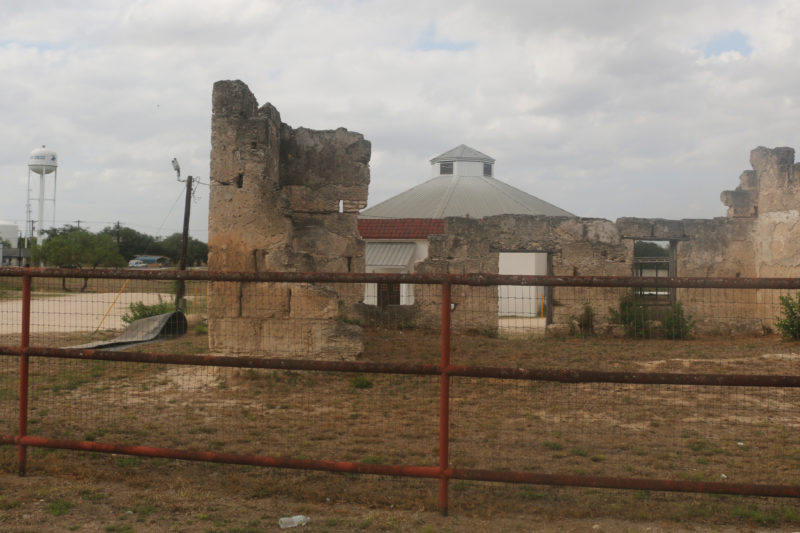
The ruins of a structure sits at the edge of the downtown area San Diego, Texas, which has lost about 1,000 residents since the 1980s. Gabriella Ybarra/Reporting Texas
Rocky paths, cracked sidewalks and the crumbling ruins of structures surround the Mexican-style plaza in the middle of downtown San Diego, about 130 miles due south of San Antonio. Most buildings are abandoned. The few that remain reveal the city’s history.
Established by Mexican ranchers along the banks of San Diego Creek, the seat of Duval County emerged as a trading post between Mexico and Texas in the mid to late 1800s.
The town reached a population of 5,200 in 1980. Today it has a population of about 4,200 people, almost all Hispanic.
Graciela Gonzales, chairman of the Duval County Historical Commission, grew up in San Diego and has seen the city’s rise and fall in population. She lives on a ranch she inherited from her father and said her family’s history is what keeps her in the town.
“I grew up in the ‘50s and ‘60s and the town of San Diego, historically speaking, had been a very prosperous but small town with enough business and industry to keep people engaged here or at least close because of family ties,” Gonzales said.
After 1980, the city began to see a slow and steady decline in population, particularly among younger residents. Gonzales’ children left for college, a common occurrence.
“As far as quality of life, the opportunities in the larger cities away from our small community of San Diego, were much greater for people like my kids,” Gonzales said. “Now they are gone and don’t have intentions of coming back. They love to come to the ranch to visit, but that’s it. Their jobs, their lives, their children’s futures are elsewhere.”
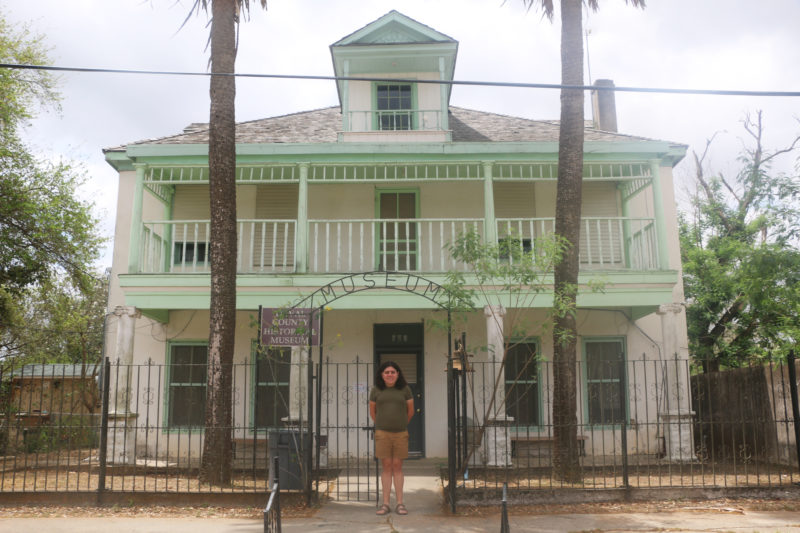
Trey Contreras, a museum clerk for the Duval County Texas History Museum, stands in front of its gates on April 23, 2022, in San Diego, Texas. Contreras works to preserve the county’s history which has seen a decline in population since the 1980s. Gabrielle Ybarra/Reporting Texas
Trey Contreras, the clerk for the Duval County Texas Historical Museum, says he’s fascinated by the history of San Diego, which he describes as a “Dairy Queen” town — a reference to the iconic fast-food restaurant common in rural Texas towns.
San Diego has an elementary, middle and high school. The town doesn’t have a doctor’s office, hotel or public transportation.
“The people are down-to-earth folks,” said Alfredo Cárdenas, who was mayor of San Diego from 1992 to 1999. “There are very few jobs and that’s the problem. That’s why the population basically doesn’t grow.”
In 2020, the median household income in San Diego was $32,000 and the poverty rate stood at 27%, according to the U.S. Census Bureau. Its unemployment rate is 11.8%.
The biggest employers in San Diego are the county and the school district, Cárdenas said. Others tend to work on ranches and in the oil and gas industry.
Many residents buy food at the one grocery store in town, Lowe’s Market. Residents often travel to Alice to shop and for services.
“It’s so easy to go to Alice; it’s 10 minutes away. And they got a lot of shops,” Cárdenas said.
Cárdenas, a retired newspaper editor and publisher, was inspired to run for mayor after businessman Billy Joe “Red” McCombs spoke at a journalism convention he attended. McCombs challenged the journalists in the room to go back to their communities and focus their efforts on one issue that needed attention.
“There were a lot of outstanding issues in San Diego and Duval County. So, rather than pick one for the newspaper to handle, I picked to run for mayor so I could address all of them,” Cárdenas said.
While mayor, Cárdenas spearheaded the creation of Duval County’s first public library in San Diego, created the city’s garbage department and set up a city-operated EMS service.
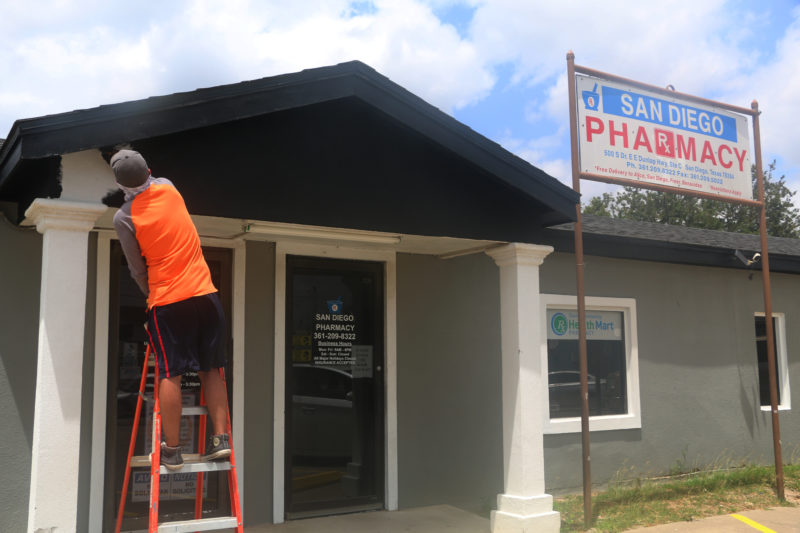
San Diego resident Steven Fehrenkamp, paints the front of San Diego Pharmacy on April 23, 2022, in San Diego, Texas. His family owns Haven Home Health Clinic next door. Gabriella Ybarra/Reporting Texas
“I really wanted to get involved in economic development. We needed to bring some businesses into town and we needed to rebuild the downtown sector and do some restoration of historic sites to start to draw some tourists but that did not happen,” Cárdenas said.
Gonzales hopes that the San Diego government will continue to restore the town’s historical buildings.
“We want to leave legacies to where people will want to come to San Diego if not just to visit but to stay,” Gonzales said. “Our biggest selling point is the rich history that we’re sitting on.”
— Cristela Jones and Gabriella Ybarra
Carthage
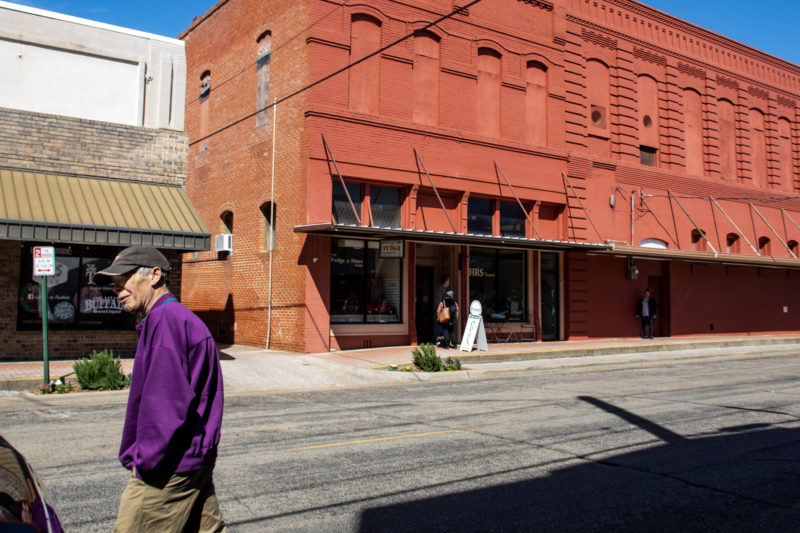
A pedestrian waits to cross the street in downtown Carthage, Texas, which has experienced a an exodus of young people. Alyssa Olvera/Reporting Texas
Deep in East Texas’ Pineywoods, not far from the Louisiana border, lies the town of Carthage, population 6,500.
Jennifer Edwards, 39, was born and raised in the town. She left for college and career and has now come back.
Edwards’ family ties to this area are deep. She’s a Black woman whose great-great-great grandfather, a formerly enslaved person, was deeded land near Carthage by the state of Texas nearly 200 years ago.
“My family’s been here since 1830 on the same plot of land,” Jennifer Edwards said. “We still have that land. We do farming, small-scale farming.”
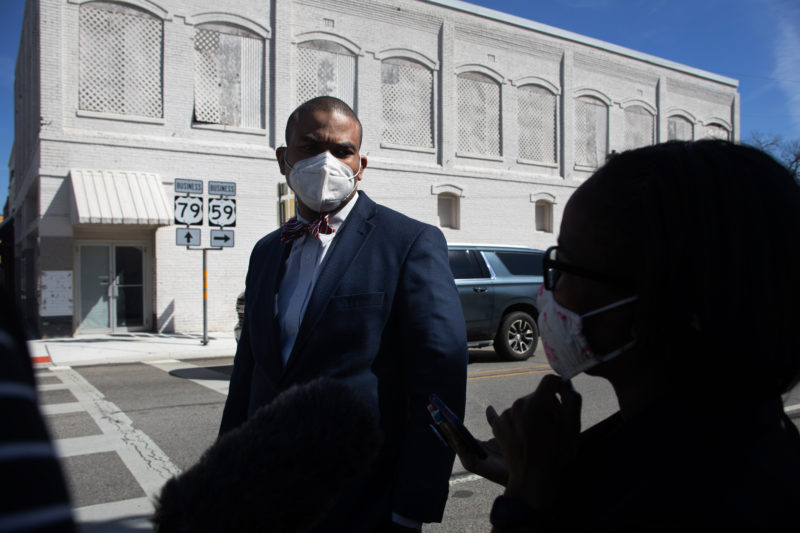
Anthony Edwards answers questions from a reporter during a tour of the town square at Carthage, Texas, on March 1, 2022. He and his wife, Jennifer, chose to move back to the town raise their daughter near family. Alyssa Olvera/Reporting Texas
Edwards and her husband, Anthony, walked around Carthage’s town square on a sunny Tuesday in March. Several stores are on the square: a thrift store, a cafe and a barber shop, to name a few. But the square also has a handful of vacant storefronts. “Carthage, Strong” is painted on the window of one empty building.
The Edwardses stopped at a gazebo on a grassy lawn in the downtown square. Anthony pointed out a statue of Jennifer Edwards’ cousin, Mildred Faye Jefferson. Jefferson grew up near Carthage and was the first Black woman to graduate from Harvard Medical School.
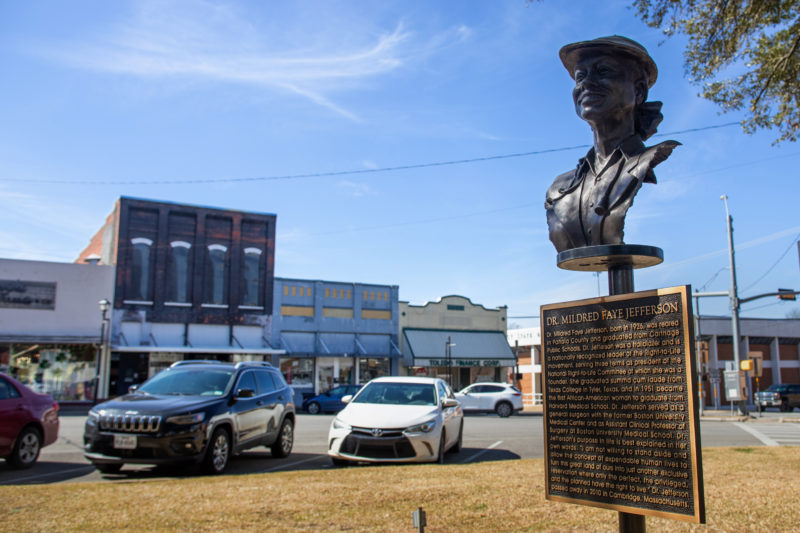
A statue honoring Dr. Mildred Faye Jefferson, the first Black woman to graduate from Harvard Medical School, adorns the town square of Carthage, Texas. Alyssa Olvera/Reporting Texas
“We want our daughter to be the next generation of that and take on that responsibility. And you know, what it means to be a part of that and what it means to carry that forward,” Anthony Edwards said.
“It made more sense to come back to Carthage, raise my daughter here. She goes to the intermediate school that I attended and also to have her raised around more family,” Jennifer Edwards said.
While the Edwardses have chosen to move back to Jennifer’s hometown, Carthage and the county it’s located in are losing population. Carthage has lost about 200 people since 2010 and Panola County has lost about 1,300 people, according to the latest U.S. Census.
County and city leaders say the area has been struggling to keep young talent after graduating from high school. These students instead travel to larger cities in Texas, such as Dallas or Austin, for college. And in many cases, they don’t come back.
As the executive director of the Rural Communication Institute at Tarleton State University in Stephenville, Jennifer Edwards works to enhance small towns across East and Central Texas for a living.
“Growing up in a rural area. I realized that I was at a disadvantage. I realized that a lot of opportunities were had by people who lived in larger cities and towns,” Jennifer Edwards said.
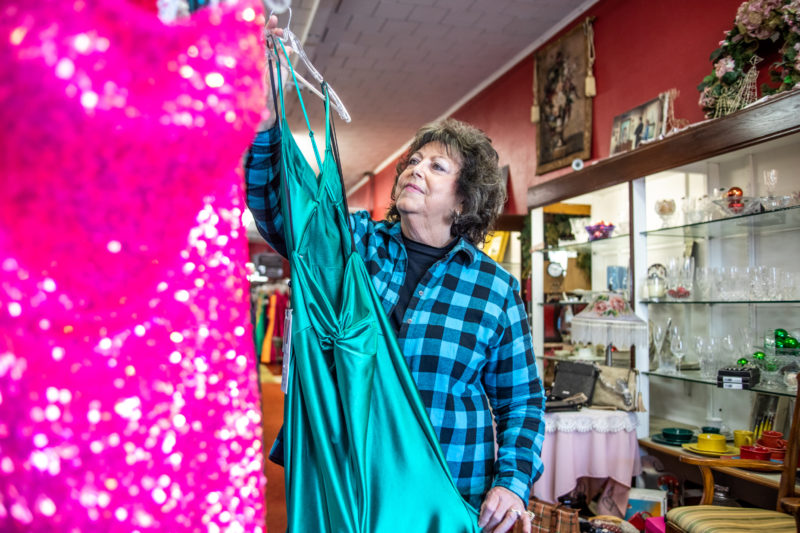
Patricia King Smith hangs up one of her favorite dresses in her shop, Beauty Sense By Patricia. Smith has lived in Carthage for over 50 years and has owned her most recent business, since 1986. She says family and the community of people are what keep her here. Alyssa Olvera/Reporting Texas
Jennifer Edwards has worked with Carthage’s Chamber of Commerce to explore ways to expand business in the area beyond Carthage’s largest employers, the oil and gas industry and a poultry plant, run by Tyson Foods. The average salary for a general laborer at the poultry plant is $22,000 to $33,000. Meanwhile, the median household income in Panola County is a little more than $51,000.
That’s more than $10,000 below the statewide median household income.
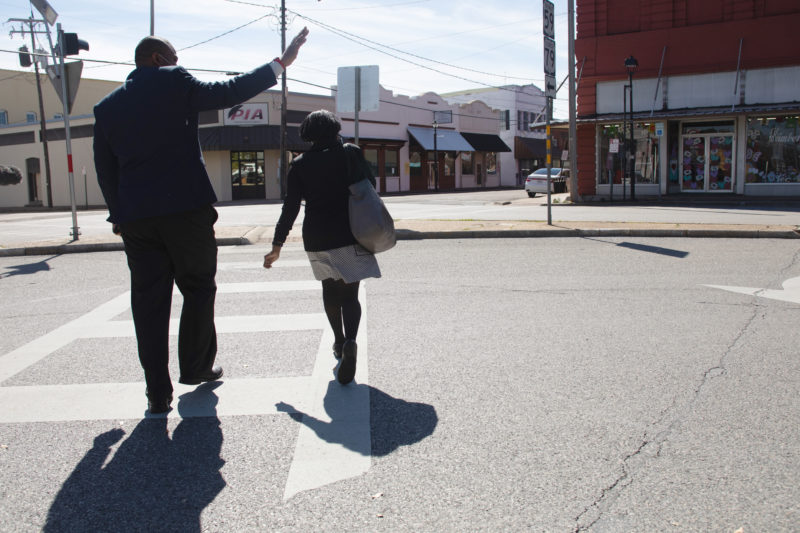
Anthony Edwards waves at a passing motorist while giving a tour of Carthage, Texas, with his wife, Jennifer Edwards. Alyssa Olvera/Reporting Texas
The Edwardses have also been trying to get resources for the town’s small businesses during the pandemic. This includes Panola County’s Black-owned businesses. Carthage’s population is about 20% Black or African-American. Many of those residents live on the city’s east side, which is economically underserved, Jennifer Edwards said.
There’s another key to getting people and businesses to invest in Carthage, Anthony Edwards said — faster broadband internet access.
In the past year, Panola County did gain back about 200 people. Community leaders credited the pandemic with affecting people’s’ decisions.
“I think people are giving a second look to their hometowns, especially through COVID. We saw a lot of people return home,” said Keri Perot Vance, executive director of the Panola County Chamber of Commerce. “And so, you know, they’re taking notice that there’s things here, great benefits to being in a small community.”
Potter, the state demographer, says recently released data from the Census in 2021 likely shows the pandemic’s effect on population trends throughout Texas.
“I won’t say a complete turnaround,” Potter said. “But, in some of the biggest counties that had been losing population, people are now moving there.”
Jennifer Edwards hopes these latest numbers are an indicator that more people like her, who moved away from Carthage when they were younger for education and job opportunities in Texas’ large cities, are coming back home.
— Jill Ament